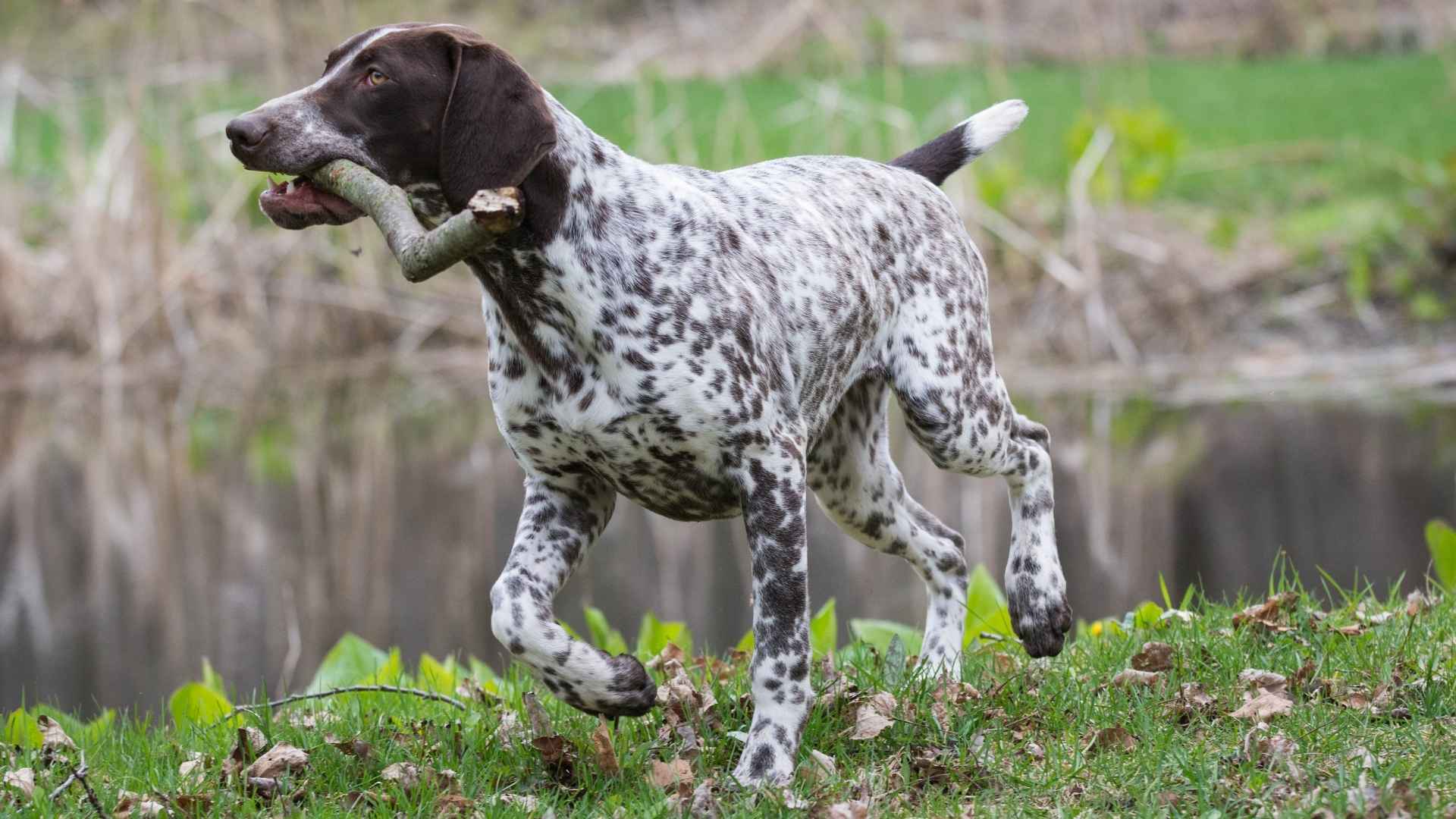Some dogs make you look twice. Not because they bark louder or jump higher, but because they look different. You catch a glimpse of a tail, then a flash of a coat. You pause. Was that… spots? Not stripes. Not patches. But real, natural spots—like the dog was born wearing polka dots.
It’s not something you see every day. But when you do, it sticks with you. They’re fun, bold, and full of flair. It’s not about the breed—it’s about the statement they carry in their fur. These dogs aren’t just pets. They’re patterns. Stories. Art in motion.
People ask about them, smile at them, and follow them with their eyes. And the best part? Each one is completely unique. No two coats are ever the same.
If you’re curious what makes some dogs look this dazzlingly different, keep reading. We’re diving into the world of dog breeds with spotted coats you’ll never forget.
Dog Breeds with Spotted Coats
1. Dalmatian
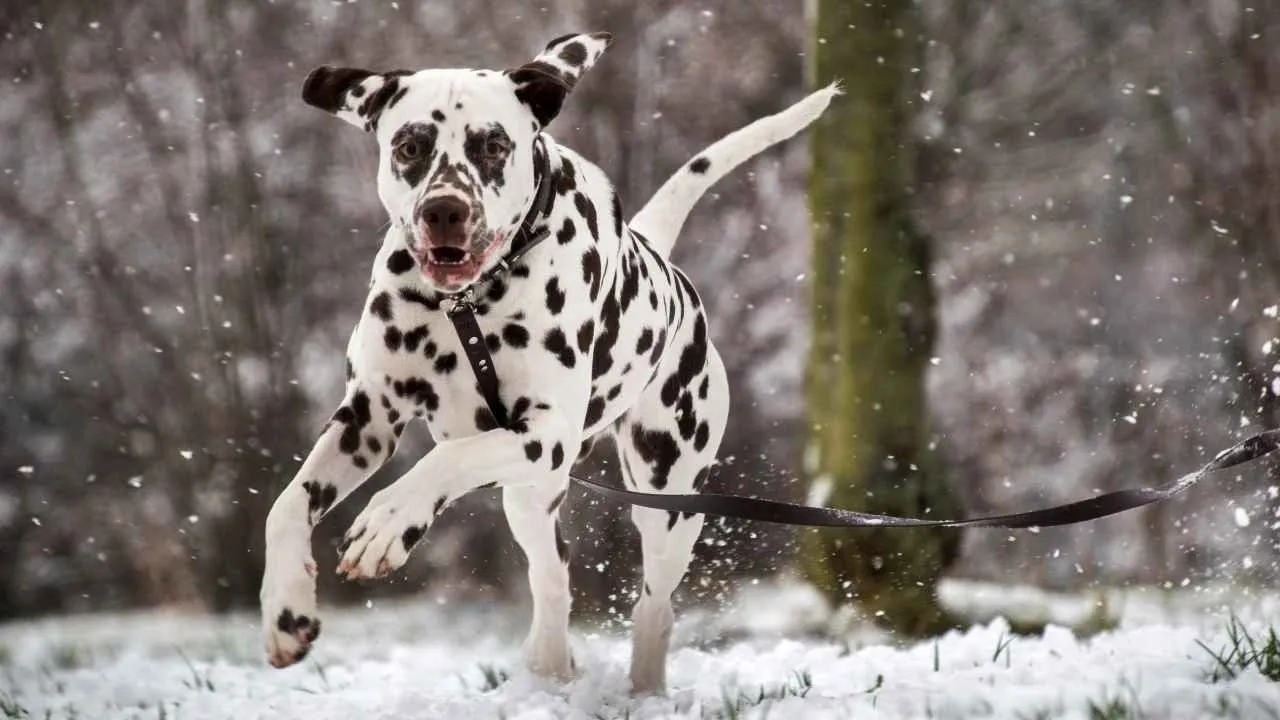
Dalmatians aren’t simply eye-catching — their spotted patterns are as unique as fingerprints, with no two coats ever exactly the same.
But beneath the signature look is a breed originally used as a carriage dog, bred to run long distances alongside horses. That legacy still shows in their stamina and need for daily physical and mental exercise.
Intelligent and independent-minded
Dalmatians are smart, often picking up on routines quickly, but that same intelligence can make them headstrong, as stated in PetMD. Consistent, calm training is essential, especially early on. Their independent streak means they’re not always eager to please, but they thrive when mentally engaged.
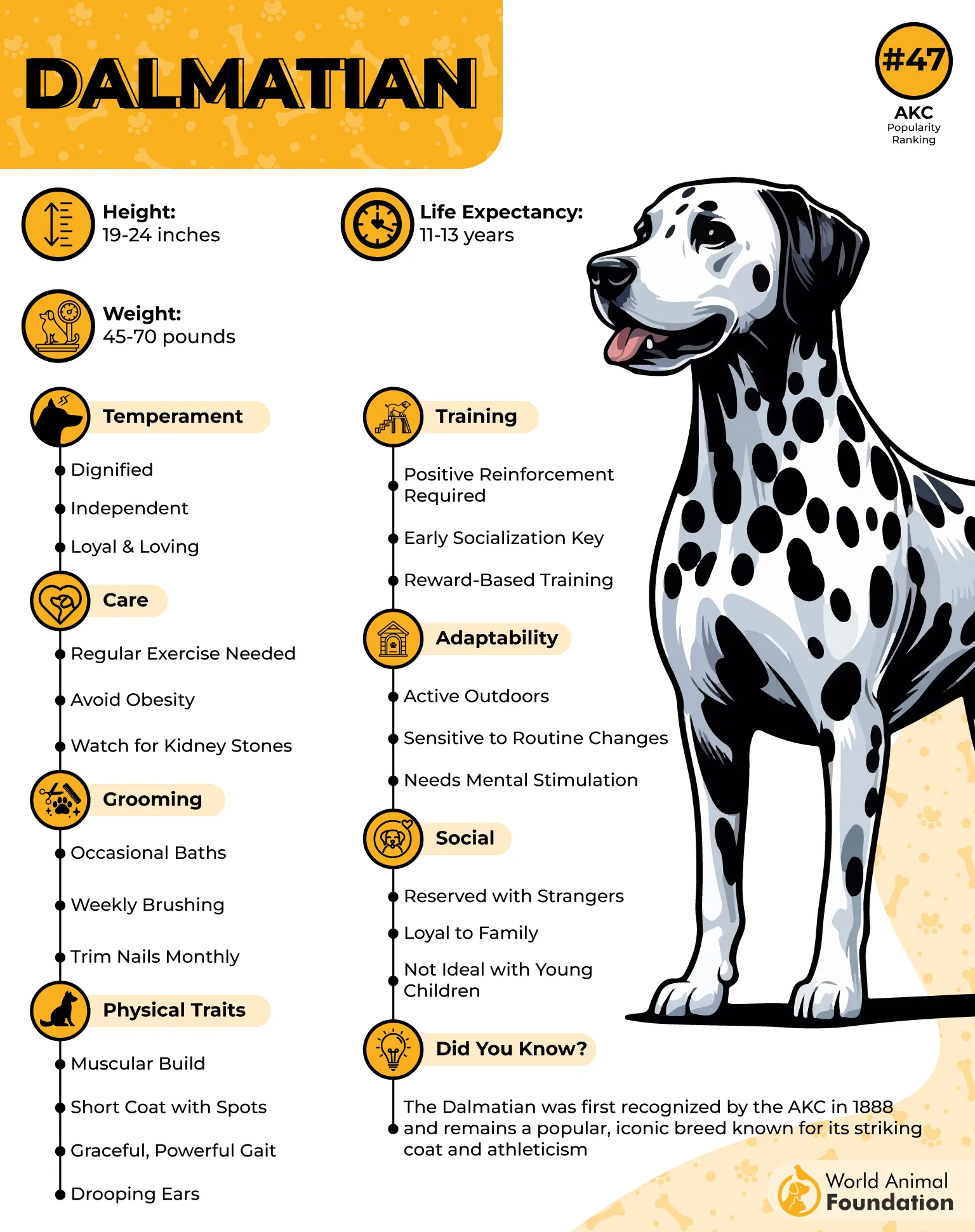
Not ideal for all beginners
Due to their high energy, strong will, and need for socialization, they may not be the best fit for first-time dog owners. Without structure, they can easily become bored or develop unwanted behaviors. They’re happiest with someone who understands how to channel their drive.
A true icon among spotted dog breeds
That famous white coat scattered with spots is also functional. Historically, their short coat helped them stay cool during long runs. While they do shed consistently, regular brushing helps manage it and keeps that glossy finish.
2. German Shorthaired Pointer
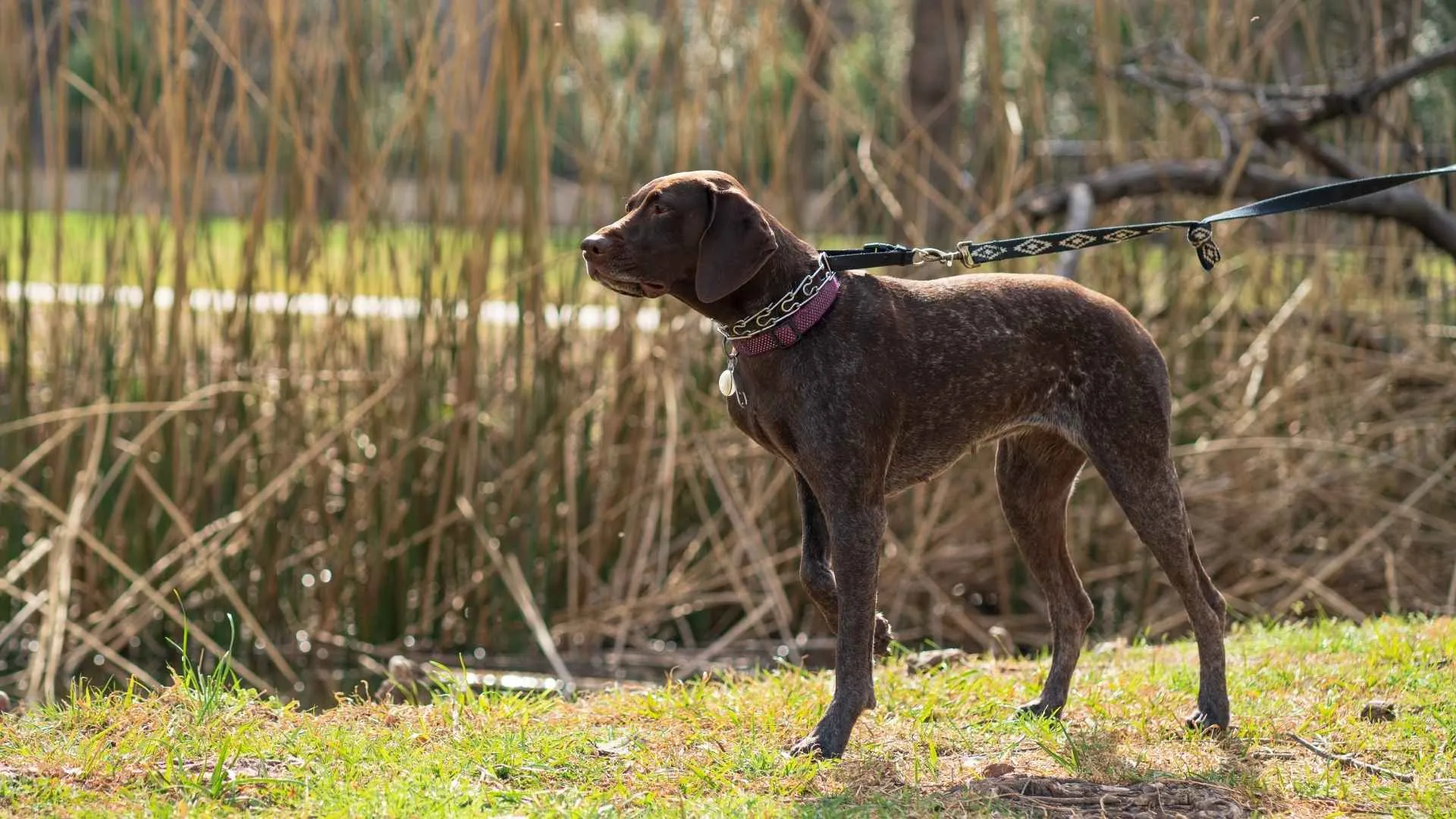
Originally bred in 19th-century Germany, this pointer breed was developed to track, point, and retrieve across land and water. Its athletic build reflects its purpose—these dogs don’t just enjoy movement, they need it. With an instinctive drive, they excel in competitive sports and hunting activities.
A coat designed for function
The dog’s coat is dense, water-resistant, and low-maintenance, often showcasing liver or black spots over a sleek base. The short, firm texture keeps debris and moisture from clinging during outdoor work. These spots vary widely—some dogs are heavily ticked while others show dramatic patching.
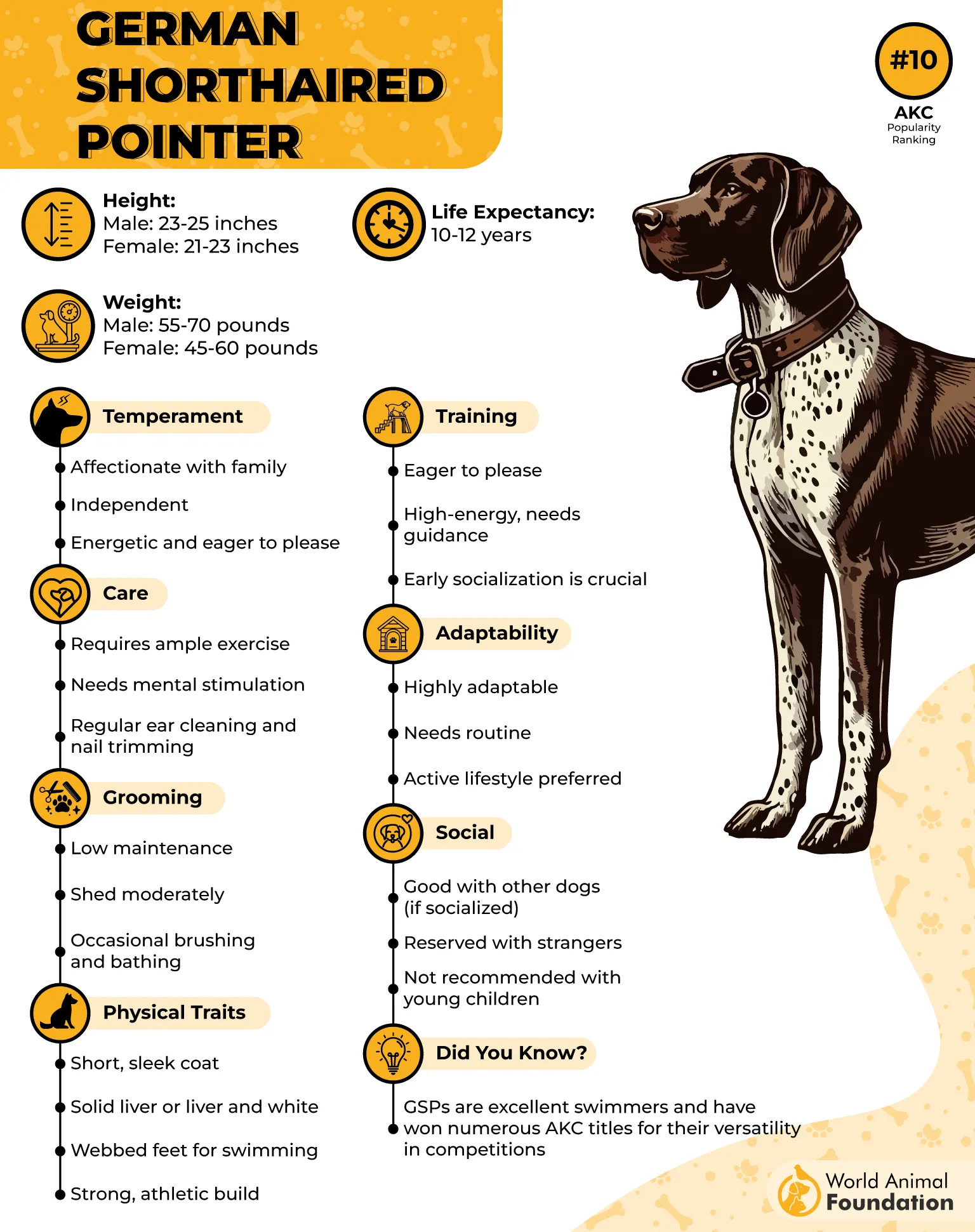
Big energy with an affectionate side
Their boundless stamina is balanced by a deeply loyal and people-focused temperament. They’re known to follow family members from room to room, always eager to stay involved. Their affectionate nature makes them great family pets when matched with an active household.
Not just a working breed
What sets them apart from many other spotted breeds is how tuned in they are to human emotions. As canine companions, they read the room quickly—whether it’s time to play or stay calm. With the right outlet, their companionship goes beyond routine loyalty.
3. Australian Cattle Dog

The mottled or speckled coat of the Australian Cattle Dog is a product of generations of breeding for endurance in rough terrain.
Their coat patterns often include blue or red speckles, with masks and saddle markings that developed for camouflage during herding work. That weather-resistant coat is dense and built to handle extreme climates.
Mental stamina that never quits
These dogs were designed for thinking on the move — literally. While herding livestock independently, they had to problem-solve without constant direction. That instinct still runs strong, so they need regular challenges like agility courses, advanced obedience, or structured play to avoid frustration.

Can form strong bonds with the right match
Though loyal, they’re naturally reserved with strangers and require early socialization. With proper training and stimulation, they can be a great family dog, especially in active households. But without clear boundaries, their bossy nature can surface, especially around children.
Harmony depends on structure
They can get along with other pets, but only when introduced properly and with rules in place. Their herding drive may cause them to chase, so supervision matters. Owners who provide structure often find they integrate surprisingly well in multi-pet homes.
4. Bluetick Coonhound
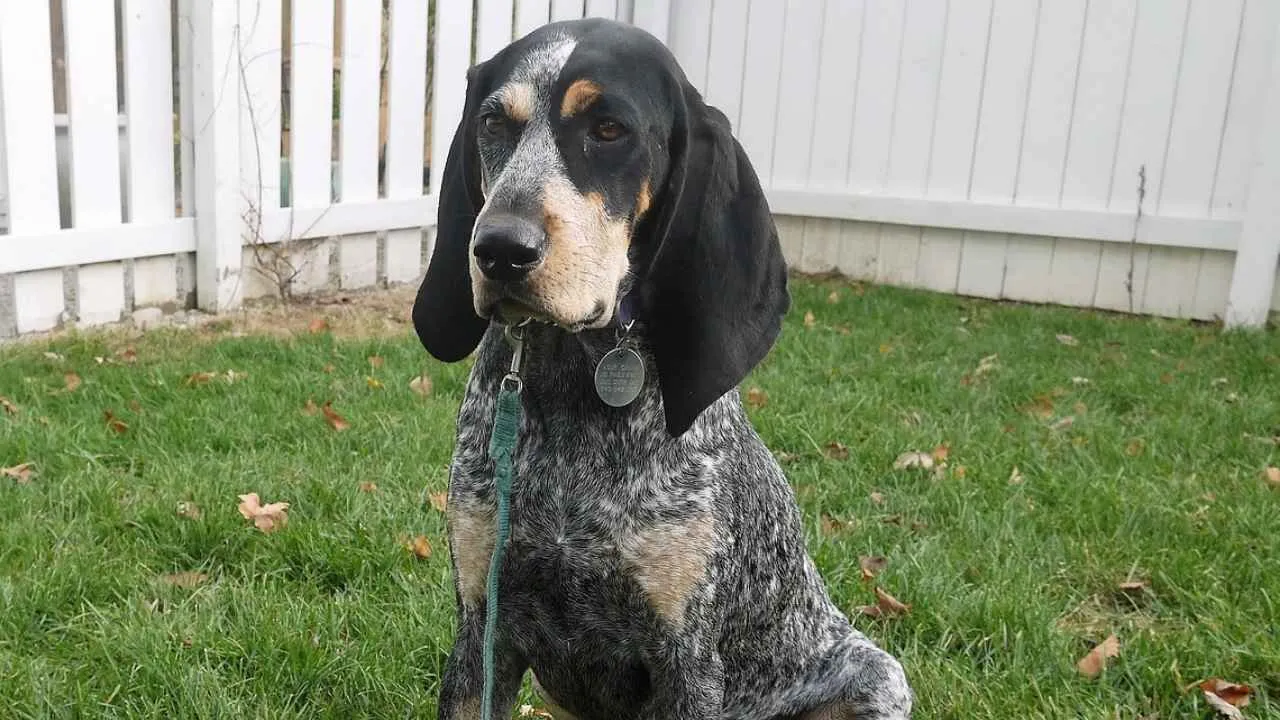
The Bluetick Coonhound isn’t just another spotted dog — it’s a scent hound through and through, bred for precision tracking in dense terrain. Its cold-trailing ability lets it follow older, colder scent trails where many others fail. This makes it a favorite among serious hunters, especially in the American South.
Spots that come with texture
This breed’s coat isn’t flashy just for the sake of beauty — the mix of dark ticking over a white base creates a signature color combination known as “blueticked.” You’ll also see black patches along the back and ears, giving the coat a mottled, textured appearance. It’s short, dense, and requires minimal upkeep.
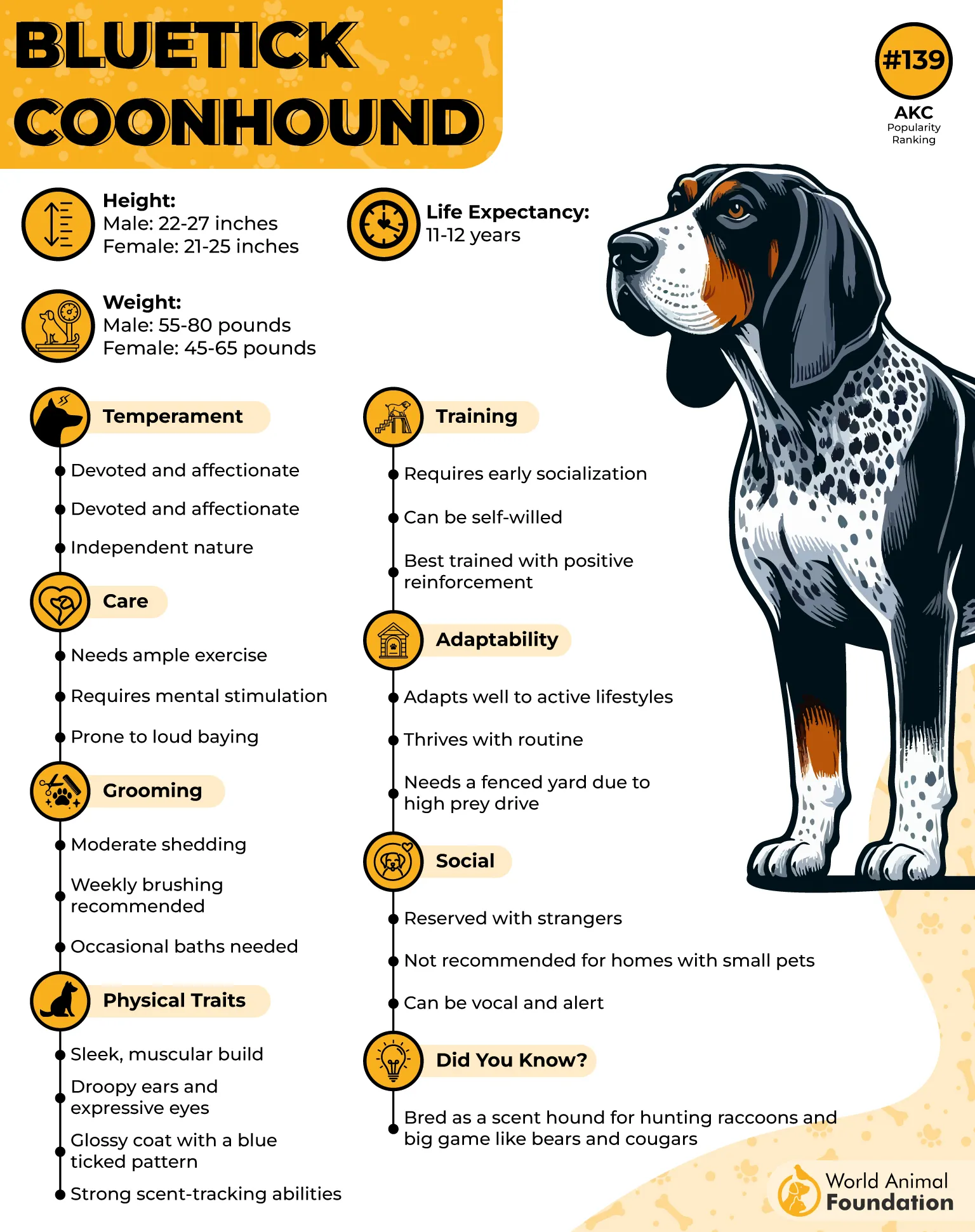
Strong-willed yet social
Blueticks have an independent streak, but they’re also known to get along well with other dogs in a home, especially if raised together, as mentioned in Showsight Magazine. Their baying voice is distinct and loud, which isn’t ideal for apartment living. But with the right space, they’re balanced and incredibly affectionate.
Not just for the outdoors
Though they were bred to cover miles, Blueticks are also excellent companions indoors when given the right outlet for their energy. They’re loyal, expressive, and bond closely with their people. What sets them apart is how deeply they connect without being overly clingy.
5. Catahoula Leopard Dog
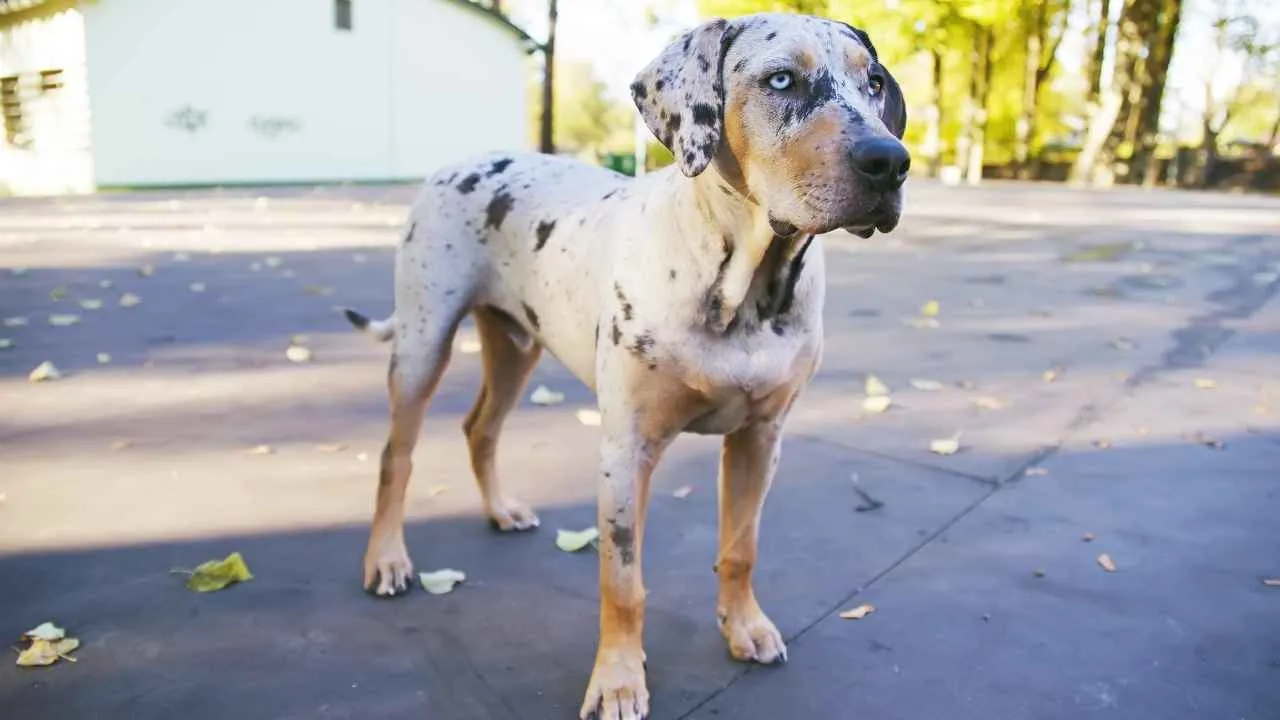
The Catahoula’s coat is spotted, marbled, patchy, and often paired with striking glassy eyes. These patterns can include merle blends, brindle overlays, and random spots that make each dog visually one of a kind.
Their name comes from Catahoula Parish in Louisiana, where the breed was developed to work swampy terrain, as per the CKC.
Working roots, real grit
Bred for herding wild hogs and cattle, this is a powerful breed with serious endurance. Catahoulas were expected to make decisions without commands, which is why they’re known for thinking independently. That working background still shows in their unmatched drive and confidence.
Smarter than they let on
Catahoulas don’t show off intelligence with tricks — they solve problems. From opening gates to tracking scent trails, their brain is always on. Without daily mental stimulation, they can become restless, which is often misread as stubbornness or aloofness.
Not just another spotted coat
While many dogs with patterns are visually striking, the Catahoula’s markings often fall over a base that’s not typically white but gray, red, or even tan. Their coat is short and dense, designed to repel water and debris when moving through marshes and underbrush.
6. English Setter
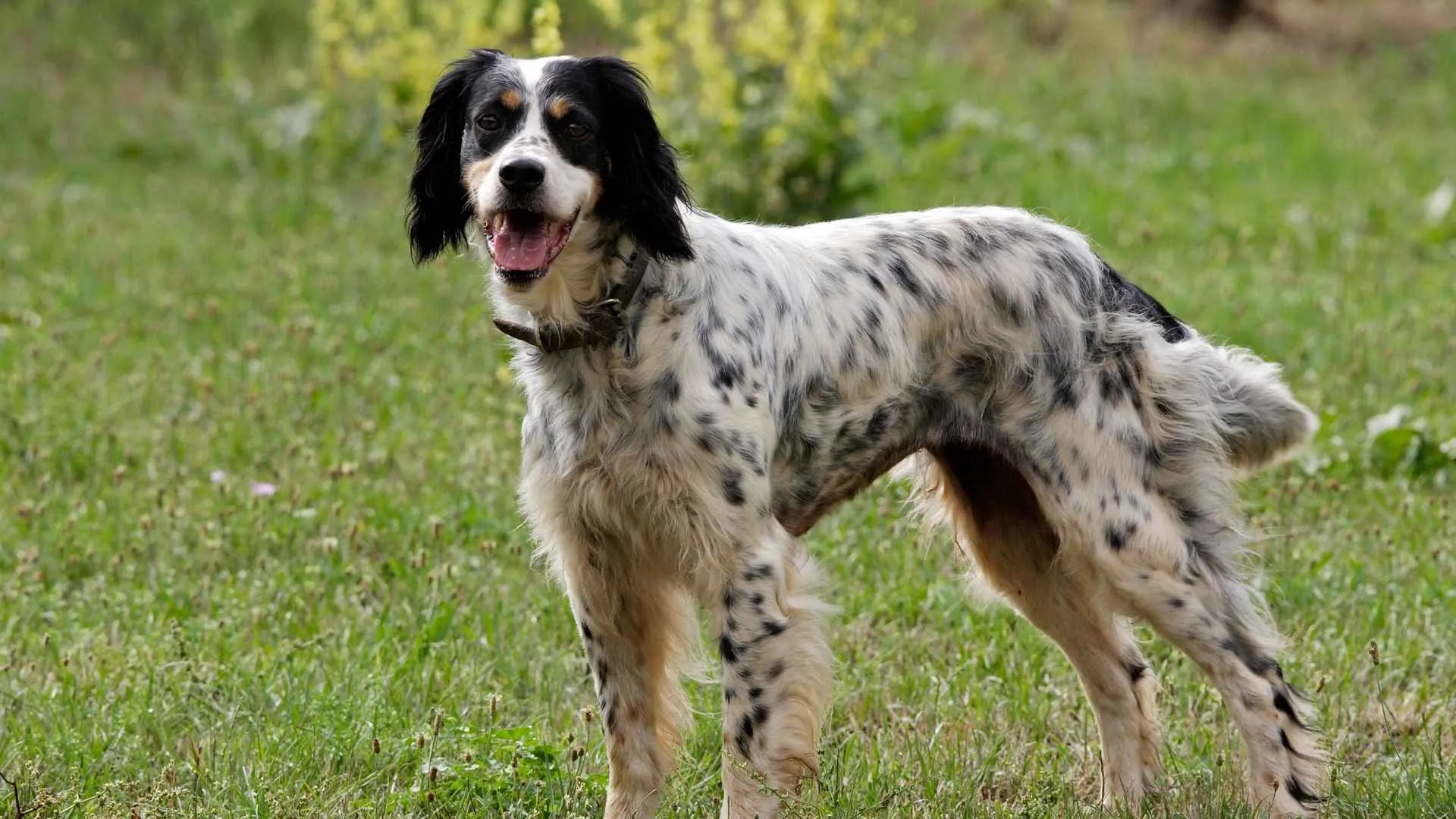
The English Setter’s coat doesn’t just catch the light — it flows with feathering on the ears, tail, and legs, making it one of the most visually striking breeds.
But look closer and you’ll notice delicate, tiny spots across its silky fur, a pattern known as “belton.” This soft speckling blends into colors like blue, lemon, or orange, giving each dog a unique look.
Bred for endurance in the field
Far beyond their appearance, English Setters are true hunting dogs, originally developed to “set” or crouch when they located game birds. Their ability to work quietly and patiently made them prized companions in the field. Even today, those instincts remain, and they thrive on activities that engage their natural tracking drive.
Calm at home, focused on action
What sets them apart is their dual nature — mellow and affectionate indoors, yet alert and driven outdoors. Their gentle temperament makes them excellent with children, but they need space to run and explore. Without mental stimulation, their focus can quickly turn to mischief.
A larger contrast to a small spotted dog breed
Unlike the compact frame of a small spotted dog breed, English Setters are tall and lean, requiring more room and activity. Their long, hunting dog lineage has given them the stamina to cover miles, but they still enjoy curling up with their people after a day outside.
7. Jack Russell Terrier
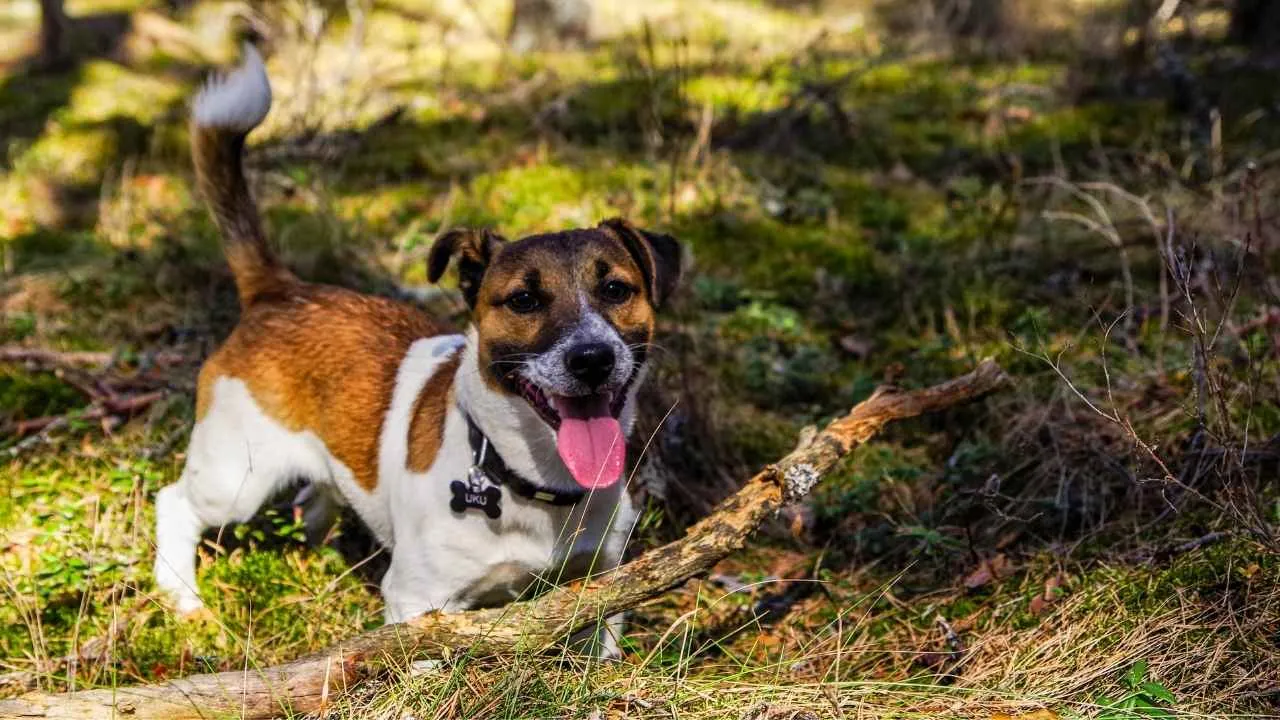
This breed was never designed for couch life — it was built for the chase. Originally bred to flush out foxes, Jack Russells are intense working dogs packed into a compact frame. Their high prey drive and relentless curiosity make them one of the most alert terriers out there.
Spots with purpose
Jack Russells often display distinct ticking or patches on a mostly white base, a feature rooted in practicality. The white coat helped hunters spot them in dense brush during fox hunts. Those signature markings may look cute, but they come from a history of precise utility.
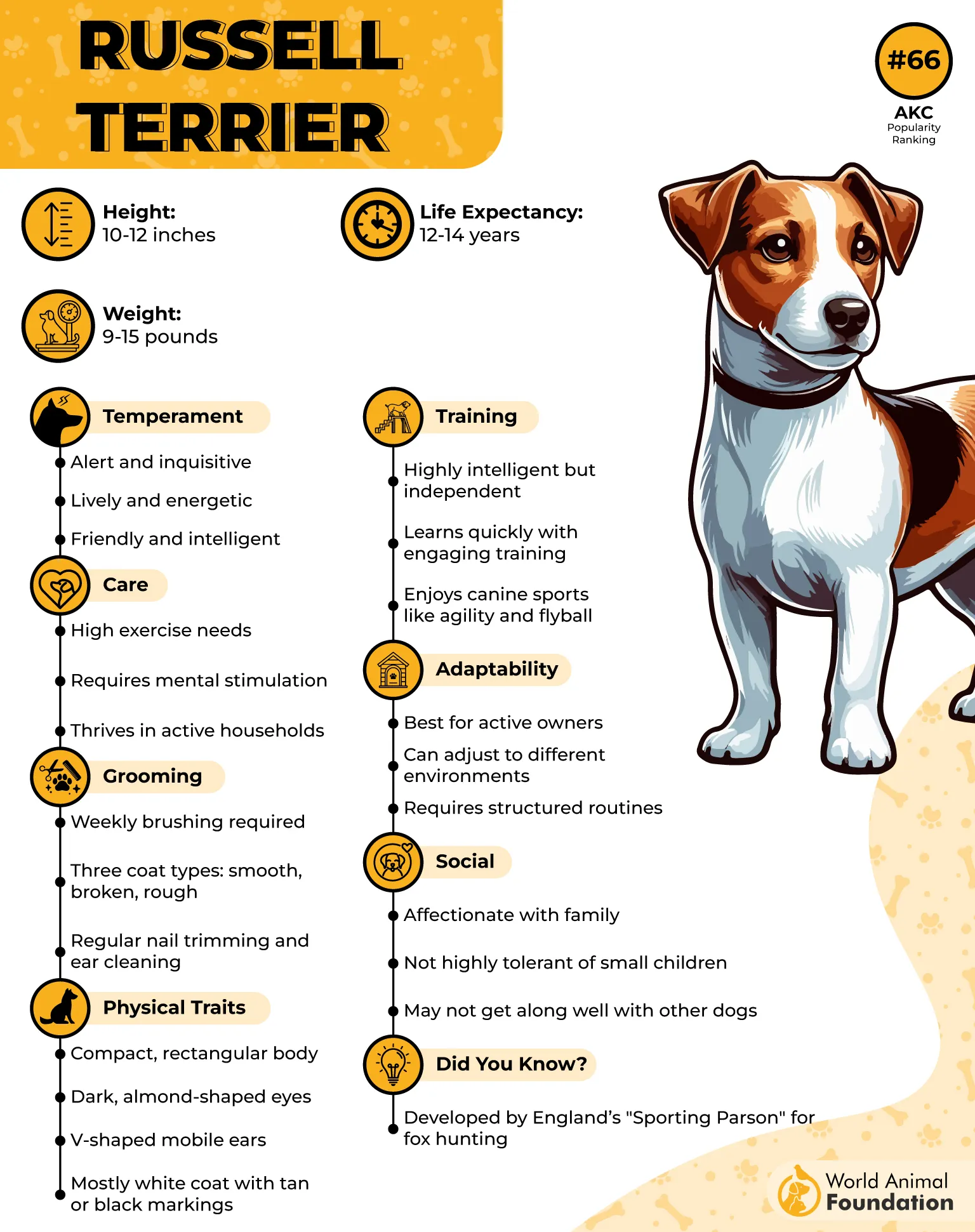
Always one step ahead
They don’t just respond to commands — they anticipate them. This breed is quick-thinking, often testing boundaries and reading its environment faster than expected. Without enough mental stimulation, they’ll invent their own tasks, which might not align with your plans.
Best in motion, not on standby
Jack Russells aren’t suited to idle households. They need structure, problem-solving, and lots of physical activity built into their day. Even a simple walk can become a mission when their instincts kick in and they catch a scent worth pursuing.
Conclusion
One look at a dog with white markings, blue merle, or brown spots, and it’s clear—these aren’t ordinary pets. They’re art in motion. Behind each coat lies a tale of history, instinct, and identity. From loyal trail-followers like the Bluetick Coonhound, to energetic workers like the blue heeler, these dogs weren’t just bred for looks—they were made for life alongside us.
Their coats are only the beginning. Many have strong minds, sensitive hearts, and, in some cases, a stubborn streak that requires thoughtful guidance. While they might not be for every beginner, with the right structure, some evolve into excellent family companions that light up any home.
If you’re drawn to dogs with layered coat colors, who bring both function and flair, then these popular spotted dog breeds deserve your attention. Some are playful. Some are serious. But every single one leaves a lasting mark—inside and out.


